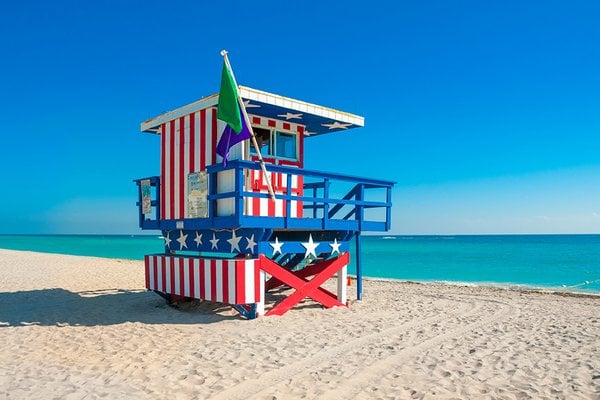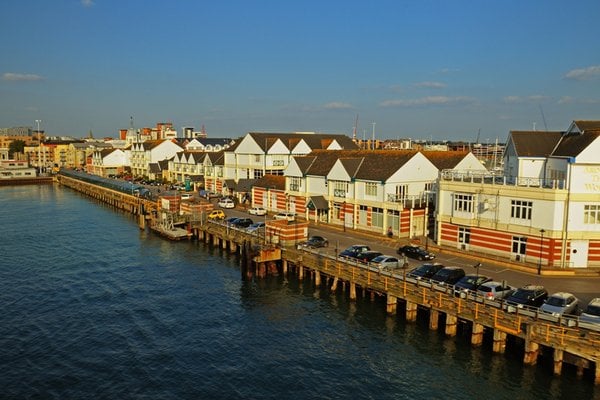Transatlantic Cruises
Experience an old world voyage through an unforgettable crossing of the Atlantic Ocean between the iconic regions of Europe and America.
Our Best Transatlantic Deals
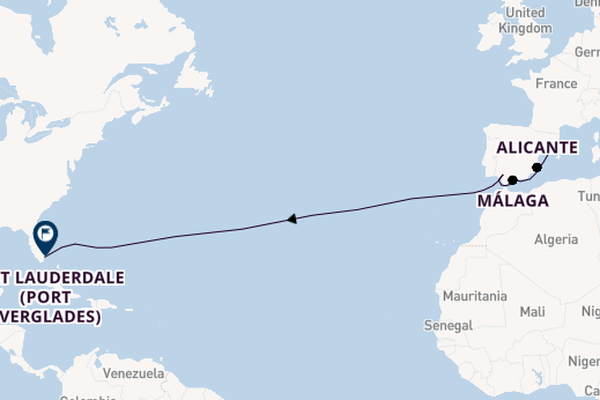
Atlantic Adventures: From Spectacular Spain to Magnificent Miami
- Royal Caribbeans brand new Icon Class cruise ship, on sale now!
- Includes a FREE 1 Night stay in Barcelona and a 2 Night stay in Miami with the option to extend
- Book now for just £199pp

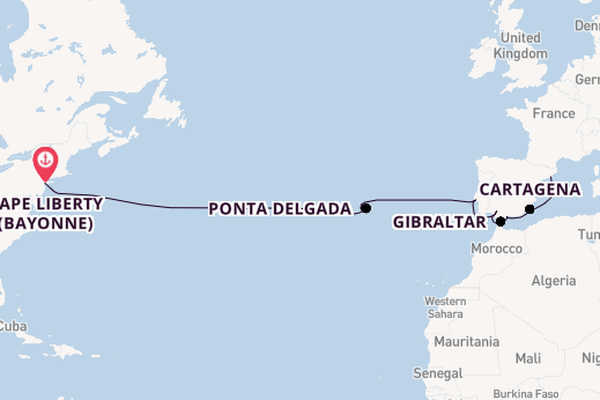
New York to Spain with a New York Stay
- Includes a FREE 2 night hotel stay in New York with the option to extend
- RipCord® by iFLY®: Experience indoor skydiving in a vertical wind tunnel.
- Option to add a stay in Barcelona - just ask!

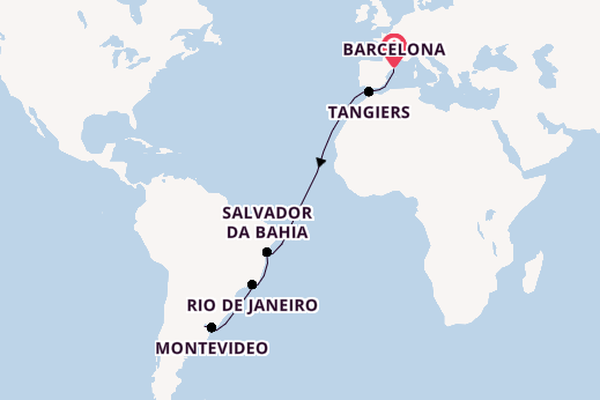
Luxury Spain to South America with Buenos Aires Stay
- NEW LUXURY - ALL INCLUDED DRINKS & WIFI!
- Includes 3 Night Buenos Aires, Argentina Hotel Stay
- Book Now For £449 PP Deposit

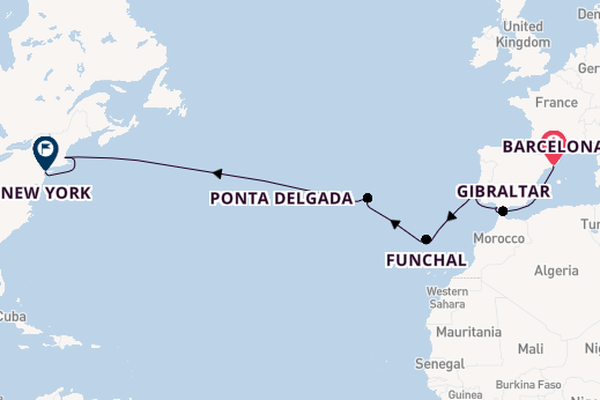
Spain, Portugal, Boston & The Big Apple
- Includes All Onboard Gratuities
- The Option To Add A New York City Stay
- Overnight On Board Stays In Boston, Punta Delgada & Lisbon

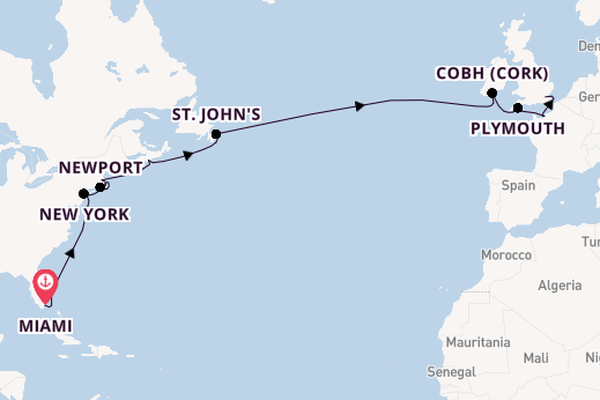
Luxury City Lights to Celtic Shores: Miami to London with Miami Stay
- More Inclusive - Unlimited Selected Drinks & Gratuities Included
- Includes 3 night Miami hotel stay
- Visiting Iconic Cities

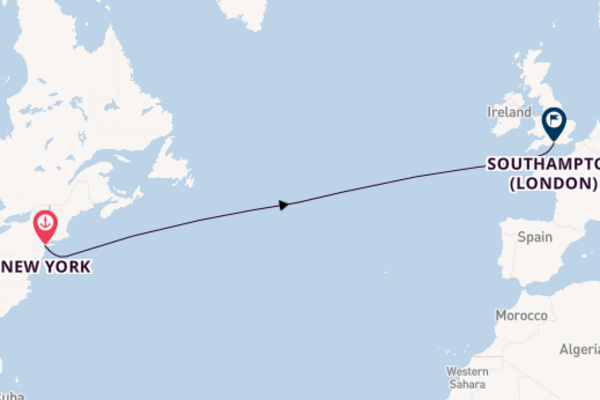
Luxury Transatlantic from New York to Southampton with New York Stay
- Includes 3 nt stay in New York
- Fashion Week Event Voyage
- Open Air Arena

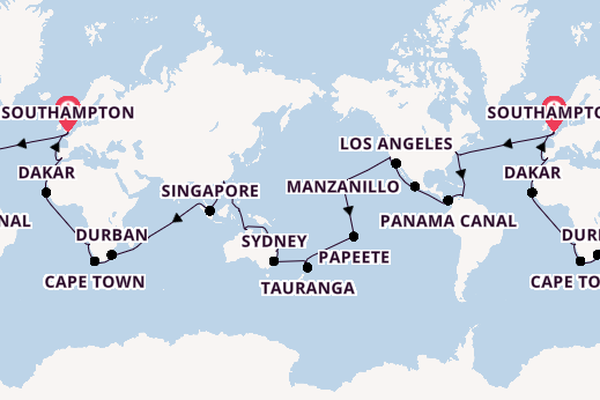
World Cruise from Southampton, England with the Queen Mary 2
- Open Air Arena
- Largest ballroom at Sea "Queens Room"
- Exclusive Mayfair shops

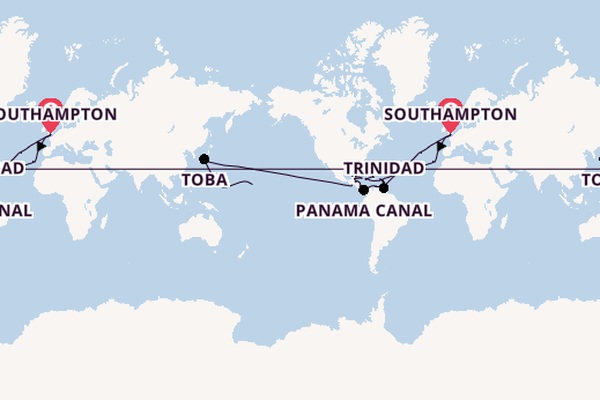
World Cruise from Southampton, England with the Aurora
- Aurora is a mid-sized, classic ship with a distinctly British touch
- Exclusively for adults, Aurora is the perfect ship if you're craving peaceful vibes
- Sail straight from Southampton and explore Europe by sea in an easy gateway
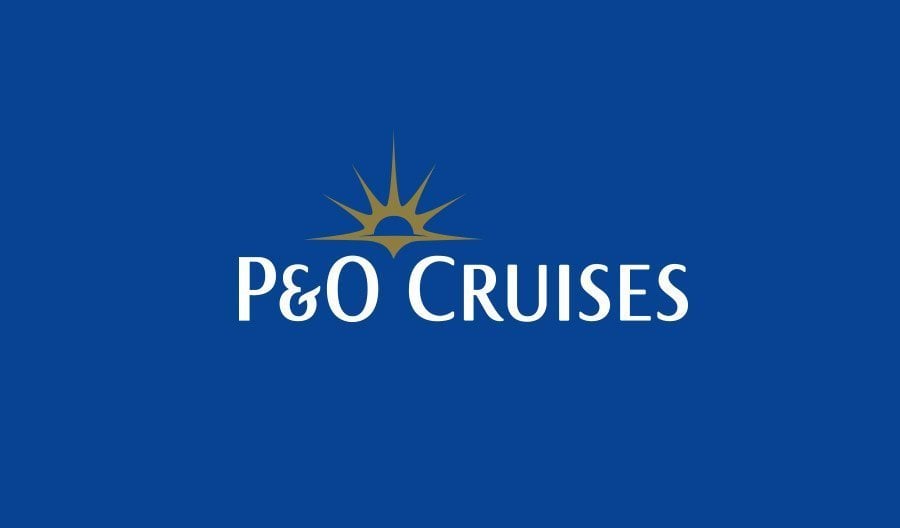
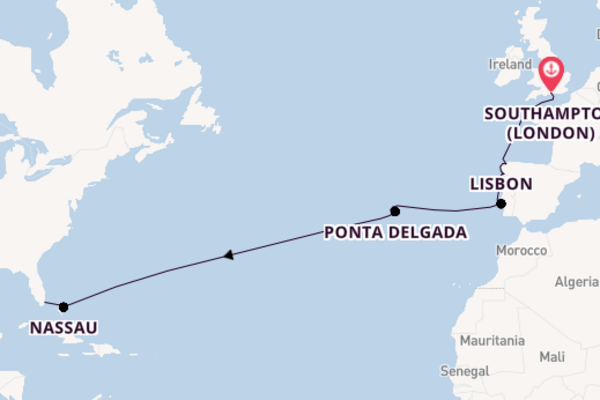
Waves & Wonders: Cruise Getaway with Orlando Fun
- BOOK NOW FOR JUST £199PP DEPOSIT!
- Enjoy Broadway's hit musical, Grease onboard for FREE
- Includes Perfect Day In Cococay, Bahamas & a 3 Night Orlando Stay!

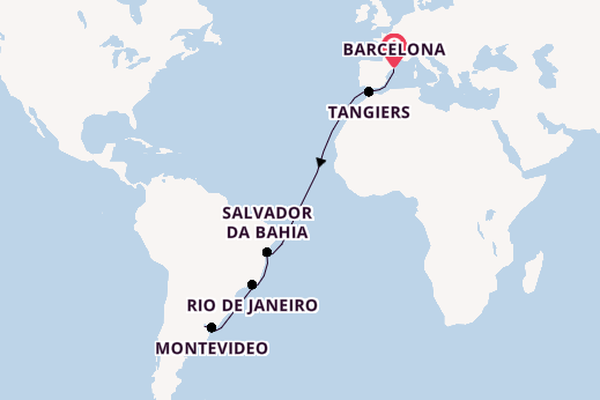
Transatlantic from Barcelona, Spain with the Celebrity Equinox
- Friendly and very accommodating service
- 10 exceptional dining venues
- Awesome craft beers at "Gastrobar"

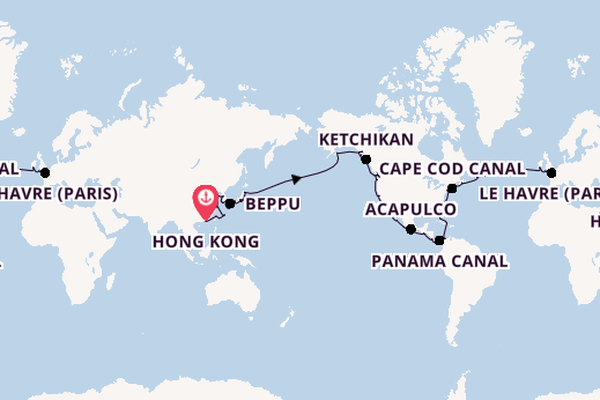
World Cruise from Hong Kong, China with the Azamara Quest
- Delicious fresh food in all restaurants
- Perfect for couples and younger cruisers
- Great overnight stays at destinations

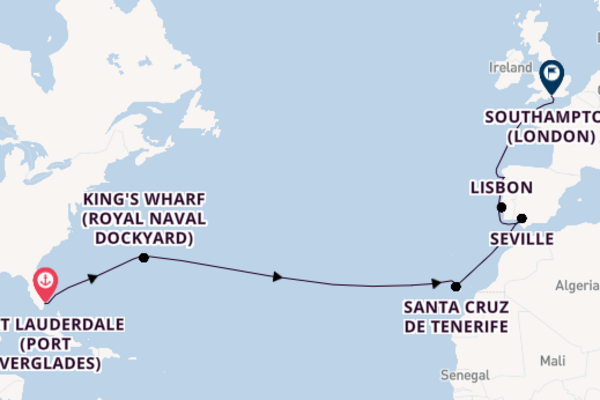
Beautiful Bermuda to Spectacular Spain!
- Book A Flight Back To Glasgow, Manchester or Birmingham & Receive A FREE Coach Transfer To Southampton Port
- Includes FREE 2 Night Miami Hotel stay with the option to extend!
- Book for just £199pp

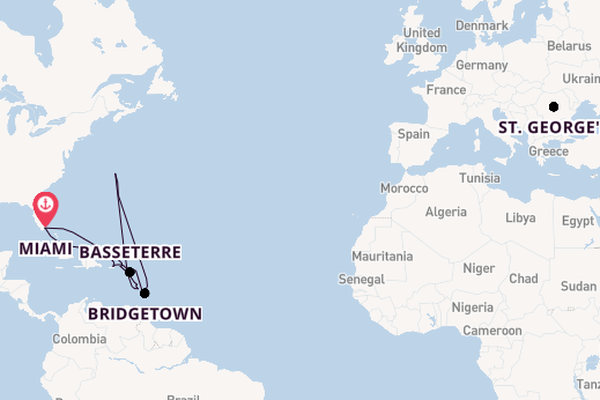
Christmas & New Year in The Caribbean with Miami Stay
- Includes 3 nights Miami Hotel Stay
- Visiting 8 Caribbean Islands
- Most destination immersive itineraries yet


Sailing the Atlantic: Journeying from Spain's Splendour to The Big Apple
- Royal Caribbeans brand new Icon Class cruise ship, on sale now!
- Includes a FREE 1 Night stay in Barcelona and a 3 Night stay in New York with the option to extend
- Book now for just £199pp

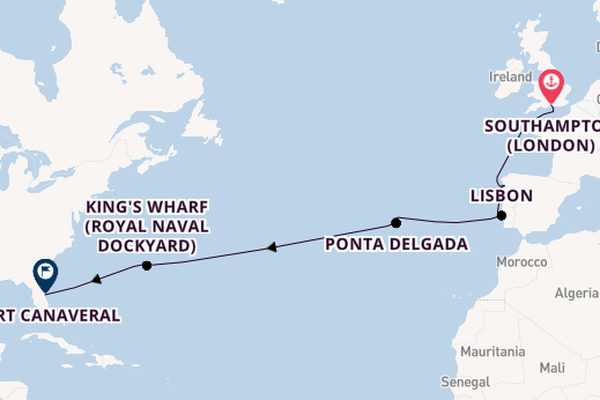
Transatlantic from Southampton, England with the Celebrity Apex
- Unique outward facing ship design
- Sailing the very best of Mediterranean and Caribbean
- Reimagined staterooms that are larger and offer more luxury

Harbours for Transatlantic
Travel Tips for Transatlantic
A Short History of Transatlantic Cruises
The allure of crossing the Atlantic by sea has captivated travellers for centuries, from the grand voyages of early explorers to the golden age of ocean liners. Transatlantic cruises, as we know them today, trace their origins back to the 19th century when steamships first began to offer regular passenger service between Europe and North America. The introduction of steam power revolutionised maritime travel, significantly reducing journey times and making ocean crossings more accessible to the public. By the early 20th century, illustrious ships such as the RMS Titanic and the RMS Queen Mary epitomised luxury and glamour, ferrying passengers across the Atlantic in unprecedented comfort and style. The advent of air travel in the mid-20th century saw a decline in the popularity of ocean liners as the primary means of transatlantic transport. However, the spirit of those grand voyages was rekindled in the latter part of the century with the emergence of transatlantic cruises. Today, these cruises offer a nostalgic nod to the past while incorporating all the modern amenities and entertainment options one expects from a contemporary cruise experience.
The Benefits of Transatlantic Cruises
Transatlantic cruises offer a unique blend of relaxation, luxury and adventure that distinguishes them from other types of cruises. One of the most appealing aspects is the opportunity for extended time at sea. Unlike port-intensive itineraries, transatlantic cruises allow cruisers to fully immerse themselves in the onboard experience, making the most of the ship’s amenities, activities and entertainment. Another significant advantage is the sense of tradition and romance associated with crossing the Atlantic. For many, it’s a chance to experience a journey steeped in history, evoking the grandeur of a bygone era. Additionally, these cruises often feature diverse onboard enrichment programmes, including lectures, workshops, and performances that enhance the overall experience. Cost-wise, transatlantic cruises can offer exceptional value. With fewer ports of call, the focus shifts to the onboard experience, which often includes full-board dining and a plethora of activities, providing great bang for your buck. Furthermore, they can be an attractive option for those looking to avoid long-haul flights, offering a more leisurely and comfortable way to travel between continents.
Cruise Lines Offering Transatlantic Cruises
Several prominent cruise lines offer transatlantic itineraries, each bringing their own unique flair and appeal to the journey. Here’s a brief overview of some of the major players: Cunard LineCunard epitomises the quintessential transatlantic voyage with their iconic Queen Mary 2, Queen Victoria and Queen Anne offering regular transatlantic crossings. Renowned for its elegance and British heritage, Cunard promises a classic and sophisticated experience, complete with black-tie dinners and afternoon tea. Royal CaribbeanKnown for its innovative ships and diverse entertainment options, Royal Caribbean offers transatlantic cruises that cater to families and adventure seekers alike. Their ships boast everything from ice-skating rinks to surfing simulators, ensuring there’s never a dull moment. Popular Royal Caribbean ships offering transatlantic cruises include Odyssey of the Seas, Adventure of the Seas and Allure of the Seas. Norwegian Cruise Line (NCL)NCL’s “Freestyle Cruising” concept, which allows for flexible dining and relaxed dress codes, appeals to those seeking a more laid-back approach to the traditional cruise experience. Their transatlantic cruises feature a variety of onboard activities and entertainment suited for all ages. MSC CruisesMSC Cruises brings a touch of Mediterranean flair to their transatlantic voyages. Known for their stylish ships and excellent dining options, MSC provides a vibrant and multicultural cruise experience, with a focus on European hospitality. Check out MSC Virtuosa, one of the top ships from the cruise line, for popular transatlantic itineraries. P&O CruisesA powerhouse of British cruising, P&O offers transatlantic crossings that reflect their long-standing maritime heritage. With a focus on British cuisine and entertainment, these cruises are particularly appealing to UK travellers looking for a home-away-from-home experience. Popular P&O ships offering transatlantic itineraries include Aria, Britannia and Ventura. Princess CruisesPrincess Cruises combines American comfort with international sophistication. Their transatlantic itineraries often feature a variety of enriching activities, such as cooking demonstrations and cultural lectures, making them a popular choice for intellectually curious travellers. Celebrity CruisesCelebrity’s transatlantic voyages are synonymous with modern luxury. Their ships are known for stylish decor, high-end dining options, and top-notch service. Celebrity’s focus on contemporary design and culinary excellence makes them a favourite among discerning cruisers.
FAQs about Transatlantic Cruises
What is a transatlantic cruise? A transatlantic cruise is a cruise that sails across the Atlantic Ocean, typically between Europe and North America or South America. How long do transatlantic cruises typically last?Transatlantic cruises generally last between 7 to 14 days, depending on the specific route and the number of stops included in the itinerary. What is the best time of year to take a transatlantic cruise?The most popular times for transatlantic cruises are during the spring (April-May) and autumn (September-November) when cruise lines reposition their ships between Europe and the Americas. Are transatlantic cruises suitable for children?Yes, many cruise lines offer transatlantic voyages with extensive family-friendly amenities and programmes. However, the number of consecutive sea days may require additional planning to keep younger children entertained. Will I experience rough seas on a transatlantic cruise?While the Atlantic Ocean can be unpredictable, modern cruise ships are equipped with advanced stabilisers to minimise motion. It’s always a good idea to pack seasickness remedies just in case. Do I need a visa for a transatlantic cruise?Visa requirements depend on your nationality and the countries included in your itinerary. Always check the specific visa requirements for each port of call and ensure your passport is up-to-date.
Expert Tips for Cruising the Transatlantic
Given the length of the voyage, pack versatile clothing suitable for varying weather conditions. Layers are key, and don’t forget formal wear if your cruise line has dress code requirements for certain nights.





